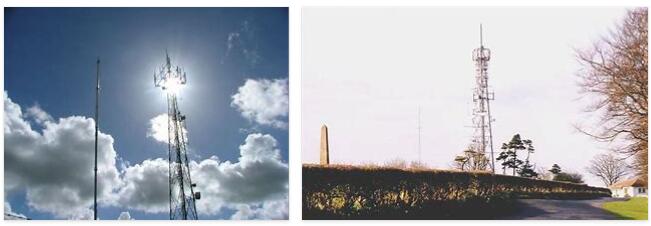England Special Buildings Part II

Kensington Palace in London
The palace is located in the Royal Borough of Kensington and Chelsea. The architect Christopher Wren rebuilt the former private property. In the 17th century the palace gained more and more importance and over time it was furnished with sumptuous apartments and wonderful furniture and paintings. After the death of George II in 1760, no ruling monarch lived here again. In 1912 the public was allowed to visit the palace for the first time. From 1981 to 1997 Princess Diana lived at Kensington Palace.
Covent Garden in London
The Royal Opera House is located in the famous Covent Garden district, which is in the City of Westminster district. In addition, Covent Garden has always stood for its fruit and vegetable market, but this has now moved to “Nine Elms”. The name Covent Garden is often only used for the market halls and the open-air area around them, but this actually means “Covent Garden Piazza”. The square was built by Inigo Jones, inspired by the great squares of Italian cities like Rome. Covent Garden market became the most important in the country in the 17th century.
Banqueting House inLondon
The only remaining building of the former Whitehall Palace is in Whitehall and was built by Inigo Jones for King James I from 1619-1622. It is the first building in London to be built in the so-called Palladian style and contains a particularly remarkable ceiling painting by Peter Paul Rubens from 1635.
Downing Street No. 10 in London
On Downig Street, at number 10, lives the First Lord of the Treasury, who is also the country’s Prime Minister. Right in the city center, on a side street off Whitehall, the house has been the permanent residence of the respective Prime Minister since 1902. The number 10 is closely related to the 7 in which the Chancellor of the Exchequer lives. Since an attack by IRA terrorists in 1999, tourists can only pass the street at irregular intervals and in small groups.
Hampton Court Palace in London
The castle to the southwest of London in the district of Richmond upon Thames contains architectural elements of the Tudor style and the English baroque. It has a famous maze of hedges and is of course shrouded in legend: it is said that ghosts haunt the old castle. The Hampton Court painting collection is famous; a stroll through the lavish landscaped gardens offers a wonderful view of the baroque facade by the architect Christopher Wren.
St. Pancras Station in London
St. Pancras Railway Station is north of the city between the British Library and King’s Cross Station. It was built in the 19th century and is one of the most admired buildings of the Victorian era: the building impressively illustrates the Victorian Gothic and contains elements from many other eras. The plans were designed by one of the most important architects of his time, George Gilbert Scott.
The Bank of England in London
The central bank of the United Kingdom is also known as “The Old Lady of Threadneedle Street” or just “The Old Lady”. The Scot William Paterson founded the bank in 1694
Aston Hall mansion in Birmingham
The Aston Hall mansion is located 2 km north of central Birmingham in the Aston suburb. Here, among other things, the paneled Long Gallery can be visited.
St. George’s Hall in Liverpool
The venerable St. George’s Hall in Liverpool was built in the mid-19th century in a classical style. The hall, which can hold a total of 1,800 people, is unfortunately closed to the public most of the year; concerts are only given in August.
Liverpool Cathedral
The Anglican Episcopal Church of Liverpool, built between 1904 and 1978, was kept in the neo-Gothic architectural style, but also has modernist elements. Liverpool Cathedral, one of the largest Angican churches in the world, also has a 100 m high quadruple tower, inaugurated in 1942, which can be visited.
Trinity Guildhall in King’s Lynn
The Trinity Guildhall in King’s Lynn stands out due to the checkered pattern of its facade. It dates from the 15th century and was expanded in the neo-Gothic style.
St. George’s Guildhall in King’s Lynn
The St. George’s Guildhall, the town hall of King’s Lynn, was built in 1420 and is therefore the oldest town hall in England. During the Elizabethan Age, the building was used as a theater and Shakespeare is said to have performed his plays here.
Jane Austen’s House in Chawton
Jane Austen’s House is located in Chawton, approximately 25 km east of Winchester. Inside the red brick house, in which Jane Austen wrote novels such as “Pride and Prejudice” and “Emma”, a small museum displays objects from the poet’s possession.
Dover Town Hall – Maison Dieu
The town hall used to serve as a hostel for pilgrims, but today it houses an exhibition of portraits of rulers and weapons.
Royal Pavilion in Brighton
The Royal Pavilion in Brighton, with its domes, battlements and minarets, is a strange eye-catcher in south-east England and gives the impression of being of oriental origin. In fact, the building, often referred to as the Brighton Pavilion, was not designed in its present form by John Nash until the beginning of the 19th century. Brighton has also had England’s largest marina two kilometers from Palace Pier since 1978.
Corn Exchange in Bristol
This former stock exchange building in Bristol dates back to the mid-18th century. In front of the building are four bronze pillars, the so-called “nails”, which served as trading tables. Next to it is the St. Nicholas Market, which has five market halls.
Quaker’s Friars in Bristol
The Quaker’s Friars is the registry office of Bristol, but was founded in 1227 as a Dominican monastery.
Belmont transmission tower
The Belmont transmission tower (385 m) is the tallest structure in the UK and the EU. The mast is located at Donington on Bain, a village in the British county of Lincolnshire.